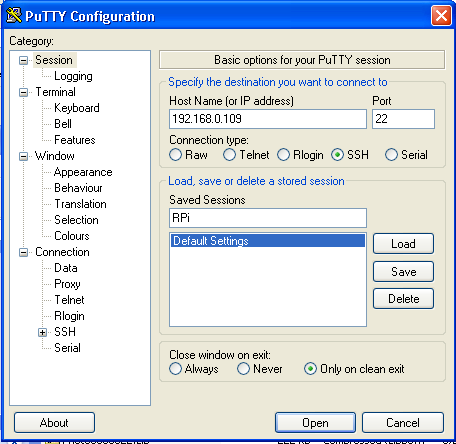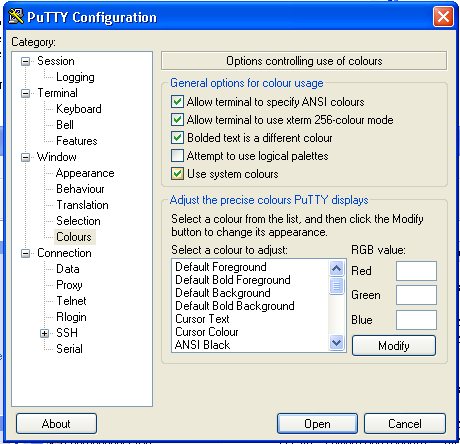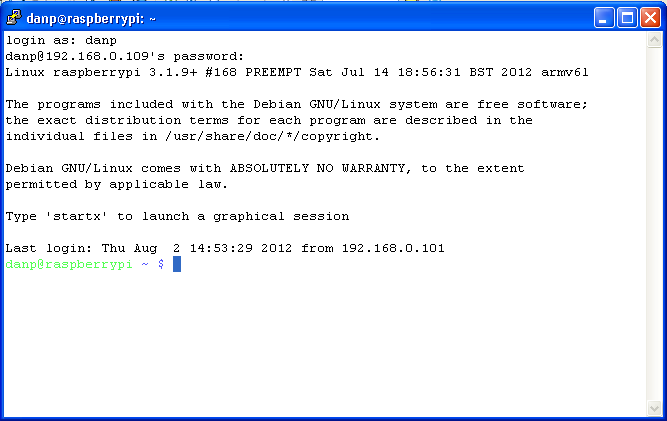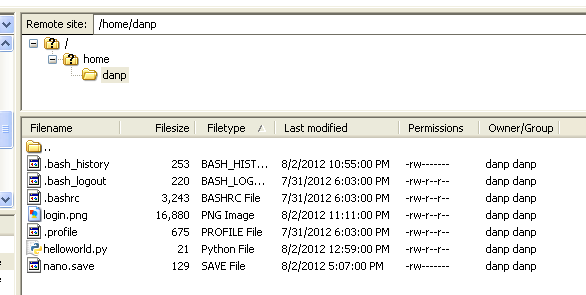
link back to raspberry_pi.html
link back to git.html
The basic instruction needed to set up Secure Shell remote access to the
Raspberry Pi are given at
Working at home I have a router between the high speed modem and local LAN. This allows me to reserve IP addresses for different devices and yet allows them to obtain their IP address from the router through DHCP.

Notes
1. when this diagram was drawn I had not yet reconfigured /dev/ttyAMA0 for general use. Once this is done the PIC can be connected directly to the Raspberry Pi (see [ttyama0_configuration_reset](raspberry_pi.html#ttyama0-configuration-reset)) 2. The connection to the USB to Serial FTDI board is more reliable when the Raspberry Pi is connected to a USB hub and the USB to Serial FTDI board is downstream of the hub.

In the raspbian distribution sshd is running by default. sshd is the program running on the Raspberry Pi that acts as a Secure SHell server daemon. PuTTY can be run as a secure shell client on a windows PC.

This resulted in a login that looked like this:

The white on black looks like an old 1980's terminal. It can be made to look more like a standard window by changing a setting. Add a check to "Use System Colors". This make it easier on the eye's.


The router I am using has four LAN ports as well as Wi-Fi. With Wi-Fi between the Android and the router and a cat5 cable from the router to the Raspberry Pi it is also possible to login to the Raspberry Pi from an Android Tablet/Phone device.
I did a test using connectbot (see http://code.google.com/p/connectbot/). It is easy to login but with my Android I have no way to enter some key combinations unless an alternate virtual keyboard is installed (the "Hackers Keyboard" from the Android market makes it possible to use the control key). This is not a problem in the shell but in some applications like the pico editor there is no way to enter the command functions (my tablet uses only a virtual keyboard). Fortunately sFTP works great so files can simply be edited on the Android and transferred to the Raspberry Pi using sFTP. Better still one can use a secure shell and edit files on the Raspberry Pi remotely using Vim (Vim does not require the use of the control key and it is possible to remap the Esc key to another key combination -- say the combination jk).
I first logged in on a winXP desktop computer (IP 192.168.0.101) and second logged in from an Android tablet (IP 192.168.0.108). The following box shows the result of a who command run on the desktop.
danp@raspberrypi ~ $ who danp pts/0 2012-08-02 19:56 (192.168.0.101) danp pts/1 2012-08-02 20:03 (192.168.0.108)
danp@raspberrypi ~ $
This underscores that the Raspberry Pi is a multi user system allowing simultaneous logins of more than one user (in this case the same user logged in from two different devices).
I have not tested an iPhone because I don't have access to one. It should work as well as the Android if a ssh client is installed.
sFTP clients can be run on computers/tablets for file transfer. They connect to the secure shell on the Raspberry Pi. For a windows sFTP client I used FileZilla since I already had it installed on my windows computer to access other sites.


On the Android tablet there also was a sFTP client installed. It is [ ES file] (https://play.google.com/store/apps/details?id=com.estrongs.android.pop&hl=en) manager which can be used both for local and remote file management.
If one is going to use the Raspberry Pi headless only it is possible to change the memory split between the main system and video. I'll be coming back to this.